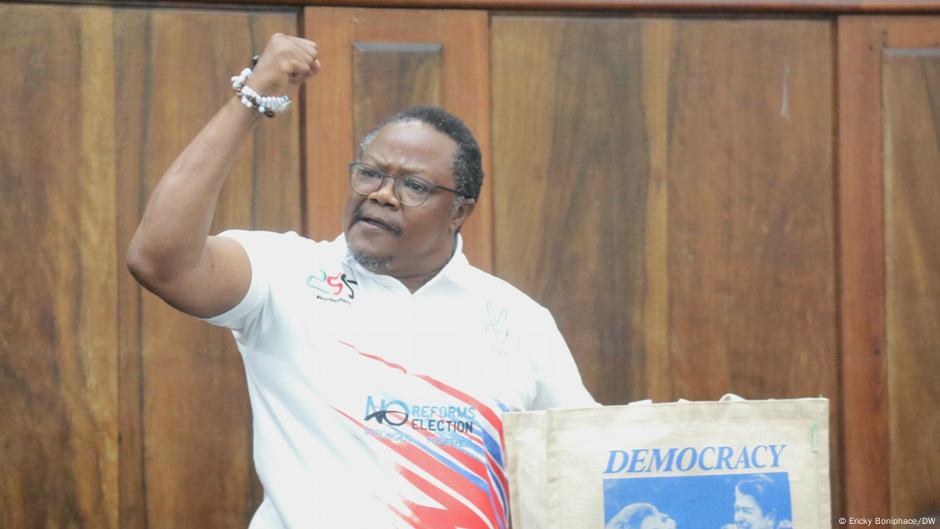Butler University eliminates social justice class requirement – Mirror Indy

Report on Butler University’s Suspension of Social Justice and Diversity Graduation Requirement
Executive Summary
Butler University announced on July 24 the suspension of its mandatory Social Justice and Diversity (SJD) course requirement for graduation. The administration cited the need to protect the university’s eligibility for federal and state funding as a primary driver for the decision. This action has significant implications for the university’s commitment to several United Nations Sustainable Development Goals (SDGs), particularly SDG 4 (Quality Education), SDG 10 (Reduced Inequalities), and SDG 16 (Peace, Justice and Strong Institutions). While the courses will remain available as electives, the removal of the requirement marks a notable policy shift in response to external political pressure.
Background of the Curriculum Decision
History and Purpose of the SJD Requirement
The SJD requirement was developed over several years and formally implemented for new students in the fall of 2020. Its creation was a direct response to internal assessments aimed at improving the campus environment.
- Origins: The initiative began in 2014, stemming from a faculty committee’s work to address sexual assault on campus and to create a more inclusive environment for minority students. This aligns directly with SDG 5 (Gender Equality) and SDG 10 (Reduced Inequalities).
- Curriculum Goals: The requirement was designed to ensure all students engaged with topics of systemic and historic marginalization. Courses such as “Native American Cultures” and “Agriculture and Food Justice” were intended to provide students with the knowledge and skills to promote human rights and cultural diversity, a key component of SDG 4, Target 4.7.
- Implementation: The program was approved by faculty and university leadership in 2017, demonstrating a prior institutional commitment to embedding these values into the core curriculum.
Rationale for Suspension
The university’s decision to suspend the requirement was attributed to a need to align with “evolving legal guidance” and to safeguard institutional funding. This move followed external scrutiny of the university’s Diversity, Equity, and Inclusion (DEI) policies from state and federal levels, including a formal inquiry from Indiana Attorney General Todd Rokita. The action illustrates a direct conflict between maintaining operational funding and upholding educational policies that support SDG 10 and SDG 16.
Implications for Sustainable Development Goals (SDGs)
The suspension of the SJD requirement directly impacts Butler University’s alignment with and contribution to several key SDGs.
SDG 4: Quality Education
- The decision represents a potential retreat from SDG Target 4.7, which advocates for an education that promotes sustainable development, including human rights, gender equality, and a culture of peace and non-violence.
- By making these courses elective rather than mandatory, the university risks a reduction in the number of students receiving a comprehensive education on social justice issues, thereby diminishing the institution’s contribution to fostering informed and responsible global citizens.
SDG 10: Reduced Inequalities & SDG 5: Gender Equality
- The SJD requirement was an institutional mechanism designed to address systemic inequality and foster an inclusive campus, directly supporting the objective of SDG 10. Its removal raises concerns about the university’s long-term strategy for reducing inequalities within its community.
- As the requirement originated from efforts to combat sexual assault, its suspension may be perceived as weakening the institutional framework supporting SDG 5.
SDG 16: Peace, Justice and Strong Institutions
- The university’s action, taken in response to governmental pressure, highlights the vulnerability of academic institutions, a challenge to the principle of strong, independent institutions central to SDG 16.
- Faculty concerns regarding the lack of consultation with the faculty senate on a curriculum matter point to potential weaknesses in internal governance and institutional integrity.
- The situation reflects a broader challenge to the role of educational institutions in promoting justice and inclusion, a core tenet of SDG 16.
Conclusion
Butler University’s decision to suspend its mandatory Social Justice and Diversity requirement, while framed as a necessary measure for legal and financial compliance, has profound implications for its educational mission. The move is seen by some faculty as a step back from the university’s abolitionist founding principles and a concession to political pressures that could undermine progress toward achieving key Sustainable Development Goals. While the university maintains that the “spirit of intellectual inquiry, respect and inclusion” will continue, the removal of the requirement raises critical questions about the institution’s future commitment to DEI initiatives and its role in advancing education for a just and sustainable society.
Analysis of Sustainable Development Goals (SDGs) in the Article
1. Which SDGs are addressed or connected to the issues highlighted in the article?
The article discusses issues that are directly connected to several Sustainable Development Goals. The analysis identifies the following SDGs as relevant:
- SDG 4: Quality Education: The entire article revolves around a university’s curriculum, specifically the removal of a mandatory course on “social justice and diversity.” This directly pertains to the quality and content of education, aiming to provide “inclusive education” and knowledge on cultural diversity and human rights.
- SDG 10: Reduced Inequalities: The social justice and diversity requirement was explicitly created to address “systemic and historic marginalization” and to support minority students. The debate over its removal and the scrutiny of Diversity, Equity, and Inclusion (DEI) policies are central to the goal of reducing inequalities within institutions.
- SDG 16: Peace, Justice and Strong Institutions: The article touches upon institutional governance and decision-making processes. The fact that the faculty senate was not consulted on a curriculum change points to issues of participatory and inclusive decision-making. Furthermore, the external pressure from government officials on university policies relates to the broader theme of institutional autonomy and justice.
- SDG 5: Gender Equality: The initiative for the social justice requirement originally stemmed from a committee working to “address sexual assault on campus.” The program director also leads the “race, gender and sexuality studies program,” linking the course’s objectives to the broader goal of gender equality.
2. What specific targets under those SDGs can be identified based on the article’s content?
Based on the issues discussed, the following specific targets can be identified:
- Target 4.7: “By 2030, ensure that all learners acquire the knowledge and skills needed to promote sustainable development, including, among others, through education for… human rights, gender equality, promotion of a culture of peace and non-violence, global citizenship and appreciation of cultural diversity…”
- Explanation: The suspended requirement included courses like “Native American Cultures” and was designed to teach students about social justice and diversity. Terri Carney, the former program director, states the goal was to have students recognize “systemic and historic marginalization.” This directly aligns with providing education on cultural diversity, human rights, and global citizenship as outlined in Target 4.7.
- Target 10.2: “By 2030, empower and promote the social, economic and political inclusion of all, irrespective of… race, ethnicity… or other status.”
- Explanation: The article mentions the requirement was proposed to “provide programming that will keep (minority students) there.” This shows the course was a policy action aimed at promoting the social inclusion of minority students on campus, which is the core objective of Target 10.2.
- Target 10.3: “Ensure equal opportunity and reduce inequalities of outcome, including by eliminating discriminatory… policies and practices…”
- Explanation: The article highlights the university’s “diversity, equity and inclusion policies” (DEI) being under scrutiny. The removal of the social justice course is a change in a policy that was originally implemented to address inequality and promote equal opportunity.
- Target 16.7: “Ensure responsive, inclusive, participatory and representative decision-making at all levels.”
- Explanation: The article explicitly states that the former program director was upset “that the faculty senate, which is primarily responsible for curriculum, was not consulted.” This points to a failure in ensuring participatory and representative decision-making within the university, which is a key aspect of Target 16.7.
3. Are there any indicators mentioned or implied in the article that can be used to measure progress towards the identified targets?
The article implies several indicators that could be used to measure progress:
- Status of curriculum requirements related to social justice and diversity: The central point of the article is the suspension of a mandatory course. Whether such a requirement exists, is mandatory, or is optional serves as a direct indicator for Target 4.7. The article states Butler “will no longer require students to take a class on social justice and diversity.”
- Implementation of Diversity, Equity, and Inclusion (DEI) policies: The article repeatedly refers to the scrutiny of “DEI policies” at Butler and other universities. The existence, scope, and funding of these policies are measurable indicators for Targets 10.2 and 10.3.
- Involvement of stakeholders in institutional governance: The mention that the “faculty senate… was not consulted” implies that the level of faculty participation in curriculum decisions is a key indicator for Target 16.7.
- Student feedback on campus climate and curriculum: The article notes that when the courses were implemented, “feedback was positive.” This suggests that student surveys and feedback can be used as an indicator to measure the effectiveness of educational programs aimed at promoting inclusion (Targets 4.7 and 10.2).
- Retention rates of minority students: The statement that programming is needed to “keep (minority students) there” implies that the retention rate of students from marginalized groups is a key performance indicator for the success of inclusion policies (Target 10.2).
SDGs, Targets, and Indicators Table
| SDGs | Targets | Indicators Identified in the Article |
|---|---|---|
| SDG 4: Quality Education | Target 4.7: Ensure all learners acquire knowledge and skills for sustainable development, including human rights and cultural diversity. |
|
| SDG 10: Reduced Inequalities | Target 10.2: Empower and promote the social inclusion of all.
Target 10.3: Ensure equal opportunity and reduce inequalities of outcome. |
|
| SDG 16: Peace, Justice and Strong Institutions | Target 16.7: Ensure responsive, inclusive, participatory and representative decision-making. |
|
Source: mirrorindy.org

What is Your Reaction?
 Like
0
Like
0
 Dislike
0
Dislike
0
 Love
0
Love
0
 Funny
0
Funny
0
 Angry
0
Angry
0
 Sad
0
Sad
0
 Wow
0
Wow
0



























;Resize=805#)



















































